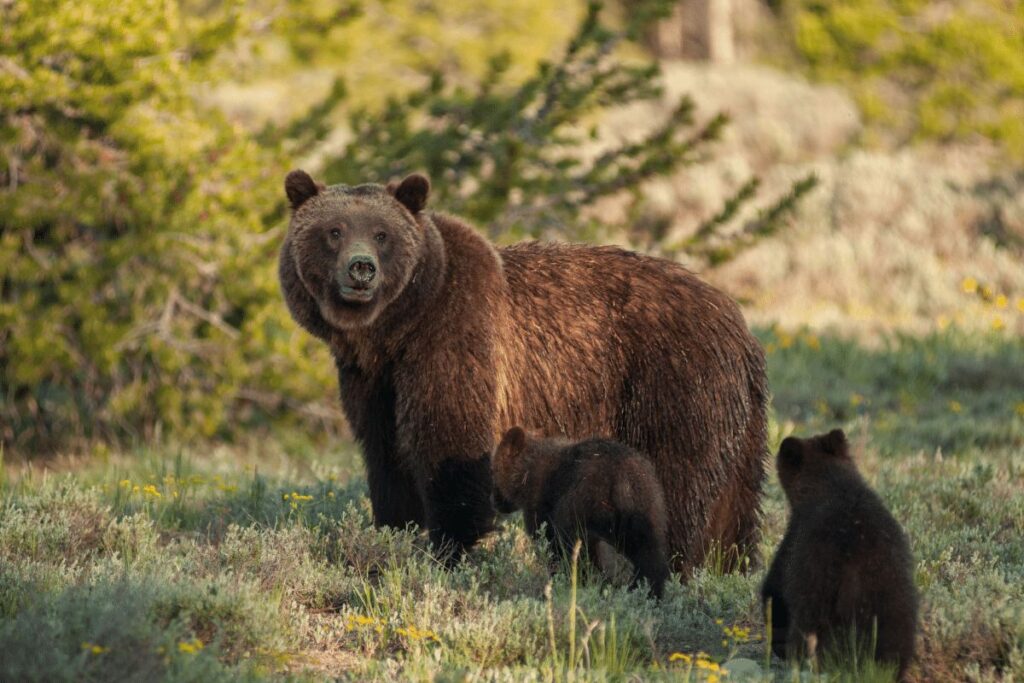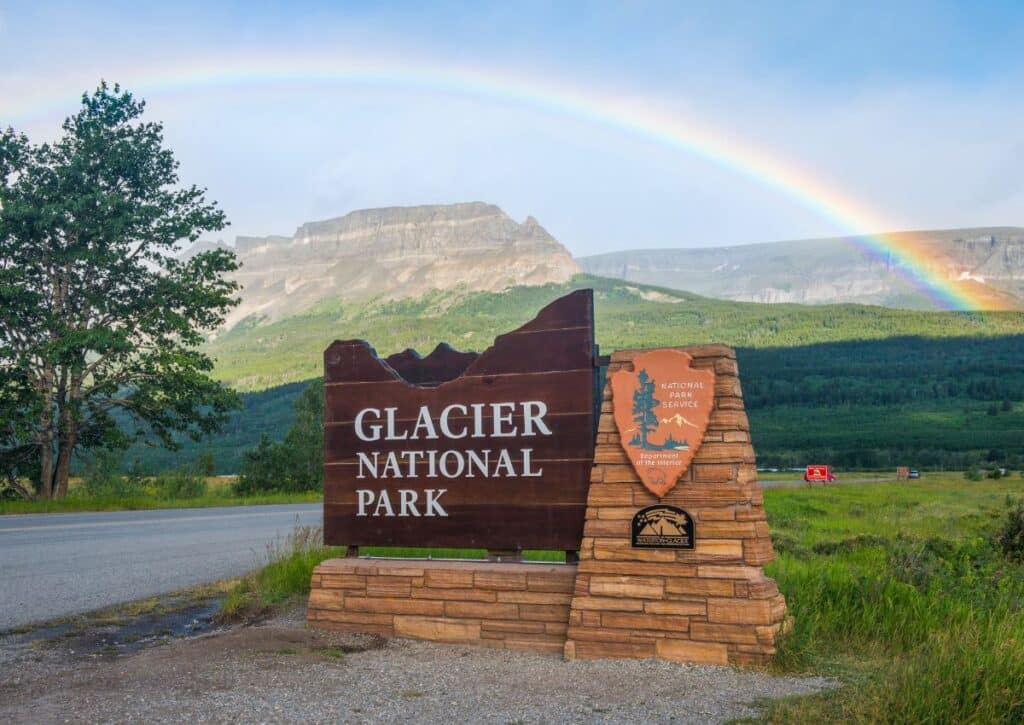Explore 13 animals in Glacier National Park with our hiking guide, tips, and photo encounters!
Our trek through Glacier National Park turned into a spectacular wildlife showcase, featuring 13 incredible animals in their natural habitat.
We’ve got the inside scoop on where to spot majestic grizzly bears, elusive mountain lions, and even the industrious beavers hard at work. Plus, we’ll share candid snapshots of our encounters!
But it’s not just about the “big guys”—prepare to be charmed by the stealthy Canada lynx and the spirited pika, both masters of their mountainous domain.
Each step on our journey was a chance to cross paths with these amazing creatures, and we’ve crafted a thrilling itinerary that promises not just sightings but an immersion into the very essence of Glacier National Park.
Join us as we recount the trails that led to breathtaking wildlife encounters and provide tips to make your own hiking adventure equally unforgettable.
Lace-up for an inspiring walk through nature’s marvels, with a few furry and feathered friends along the way!
Encountering a Grizzly Bear
As we hiked through Glacier National Park, we were fortunate enough to encounter a variety of amazing animals. One of the most memorable was a grizzly bear!

We were hiking along a trail when we saw the bear in the distance. We immediately stopped and watched as it approached us. It was an incredible experience to see such a powerful animal up close.
The bear didn’t seem aggressive, but we still kept our distance. We watched it for awhile before continuing on our hike. It was definitely a highlight of our trip!
How many grizzly bears live in Glacier National Park?
The population of grizzly bears in Glacier National Park is estimated to be around 300 individuals. Grizzly bears are a critical part of the park’s ecosystem and are one of the most iconic and recognizable wildlife species in the park.
The park has an active grizzly bear management program to monitor and protect these magnificent animals and ensure they continue to thrive in their natural habitat.
Where to see grizzly bears in Glacier national Park?
Grizzly bears can be seen in various areas of Glacier National Park, but sightings are never guaranteed. Many visitors have reported seeing grizzly bears along the roadsides or in open meadows throughout the park.
The best time to see grizzly bears is in the early morning or late evening when they are more active. However, it’s important to keep in mind that grizzly bears are wild animals and can be dangerous if approached too closely.
The Many Glacier and Two Medicine areas of the park are known for their higher concentrations of grizzly bears, as well as the Camas Road and the North Fork area. The park also offers guided tours and ranger-led programs where visitors can learn about grizzly bears and their habitat, and possibly even spot them in the wild. Remember to always keep a safe distance from grizzly bears and other wildlife and to carry bear spray with you at all times.
Also Read: 10 Incredible National Parks To See Male Black Bears Emerge From Hibernation!
Seeing Mountain Goat
We were so excited to finally see the mountain goat on our hike! We had been told by several people that they are often seen in the park, but we had yet to see one with a young one by it’s side. We were about halfway through our hike when we saw movement on the rocks above us. Sure enough, it was a mountain goat! It was incredible to see such a majestic animal in its natural habitat.
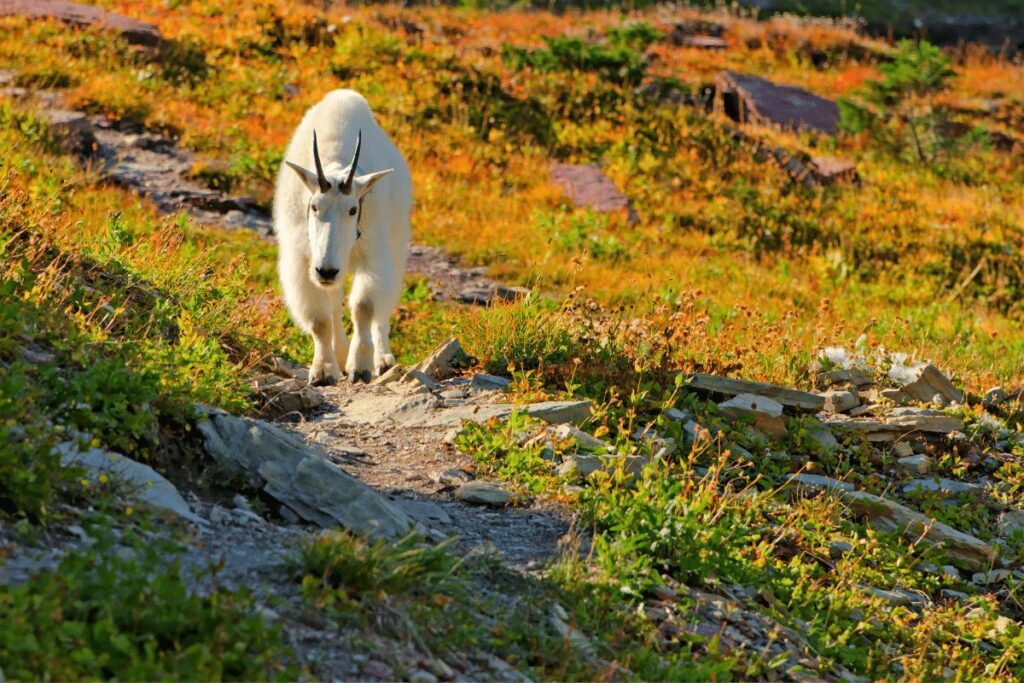
The mountain goat is an amazing creature. It is well adapted to living in rugged, mountainous terrain and can even climb steep, sheer cliffs. They are surefooted and agile, making them able to navigate treacherous footing with ease.
Mountain goats are also very curious animals and will often approach hikers in search of a handout. While it is tempting to feed them, it is important to remember that they are wild animals and should not be fed human food.
We were so lucky to have seen a mountain goat on our hike and it was an experience we will never forget. We hope to share the same experience with others in the future!
Close Encounter with a Marmot
We were only a few hours into our hike when we had our first close encounter with an animal. We were making our way up a hill when we spotted a marmot sunning itself on a rock. We stopped to take some pictures and watch it for a bit. The marmot didn’t seem to mind us being there, but after a few minutes, it scurried off into the bushes.
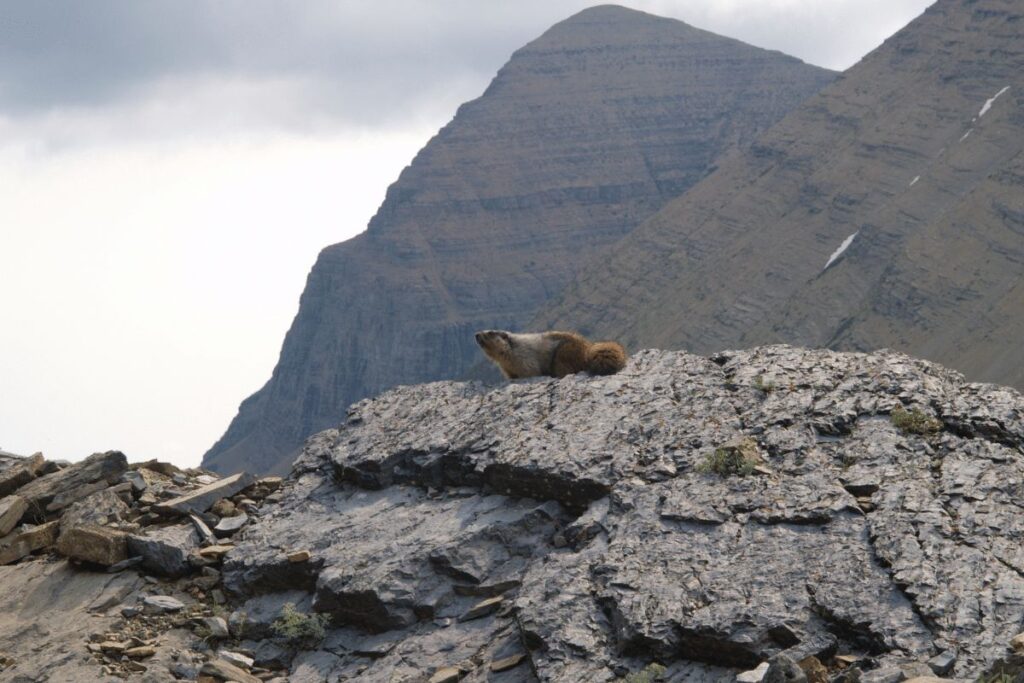
It was an exciting experience for us, and we were thankful for the opportunity to get so close to a wild animal. Even though it’s easy to find pictures of animals online, being able to observe one up close in its natural habitat is a rare opportunity that we will never forget.
Observing Bighorn Sheep
Bighorn sheep are one of the most iconic animals in Glacier National Park. These sure-footed creatures can be seen climbing steep mountainsides and grazing on grasses and herbs.
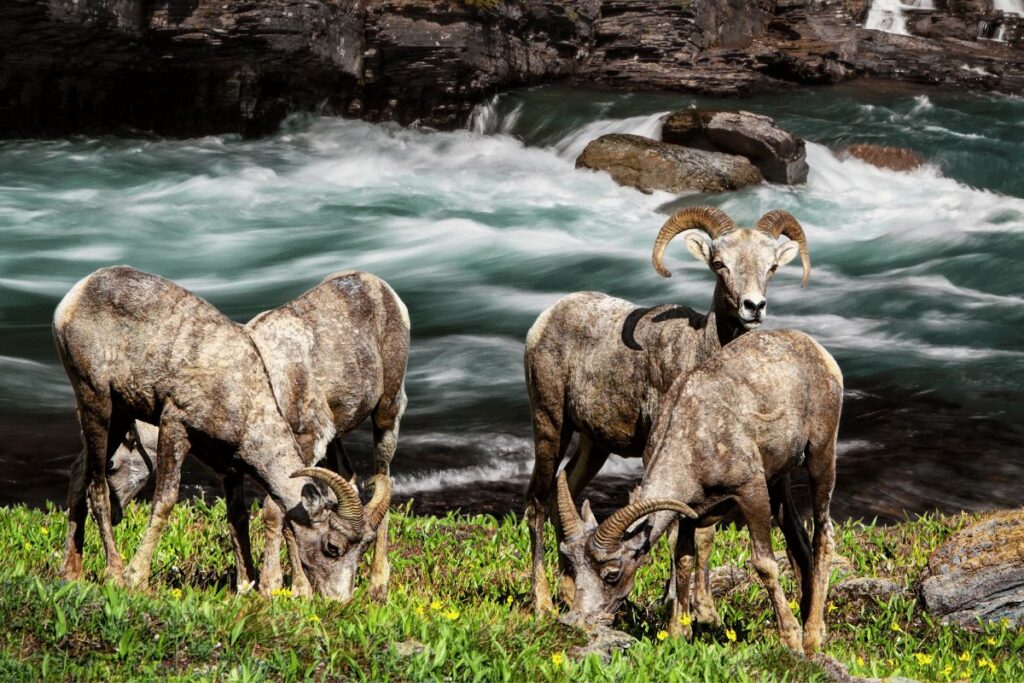
Observing bighorn sheep in their natural habitat is an unforgettable experience. To increase your chances of seeing them, hike early in the morning or evening when they are most active.
Give them plenty of space and refrain from approaching too closely, as this can stress them out. With a little patience and luck, you may be rewarded with some incredible sightings!
Watching Mule Deer in the Distance
We were rewarded with some amazing animal sightings on our hikes through Glacier National Park. One of the most memorable was watching a herd of mule deer in the distance. They were so majestic and serene, and it was an unforgettable experience to watch them in their natural habitat.
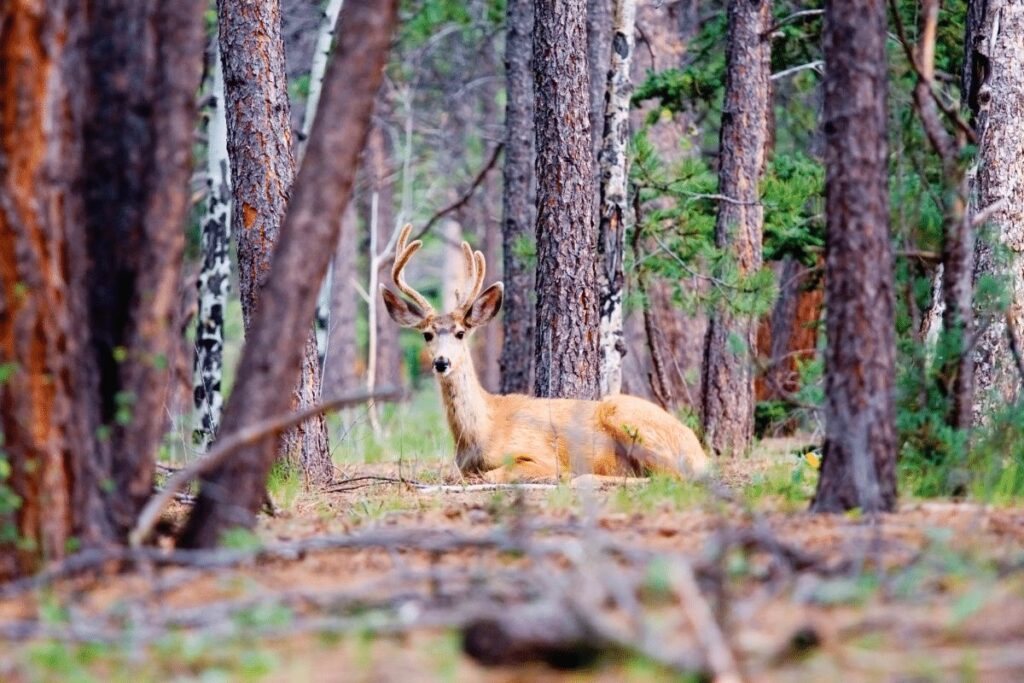
The mule deer were grazing along the hills, enjoying the sun and basking in the beauty of Glacier National Park. We stood in awe as we watched them move gracefully, taking in their majestic beauty. Their faces had a look of peace and contentment that was captivating.
We felt so lucky to have such an experience and watch these incredible animals in their natural habitat. It was a reminder of how important it is to protect our national parks and ensure they remain safe havens for wildlife like the mule deer we observed.
Spotting Coyote Cubs Playing in a Field
Coyotes are relatively small compared to other canids, but their overall proportions vary depending on subspecies. Northern coyotes are generally larger than southern subspecies, with adult females measuring in at about 33 pounds on average and adult males weighing in at about 40 pounds.
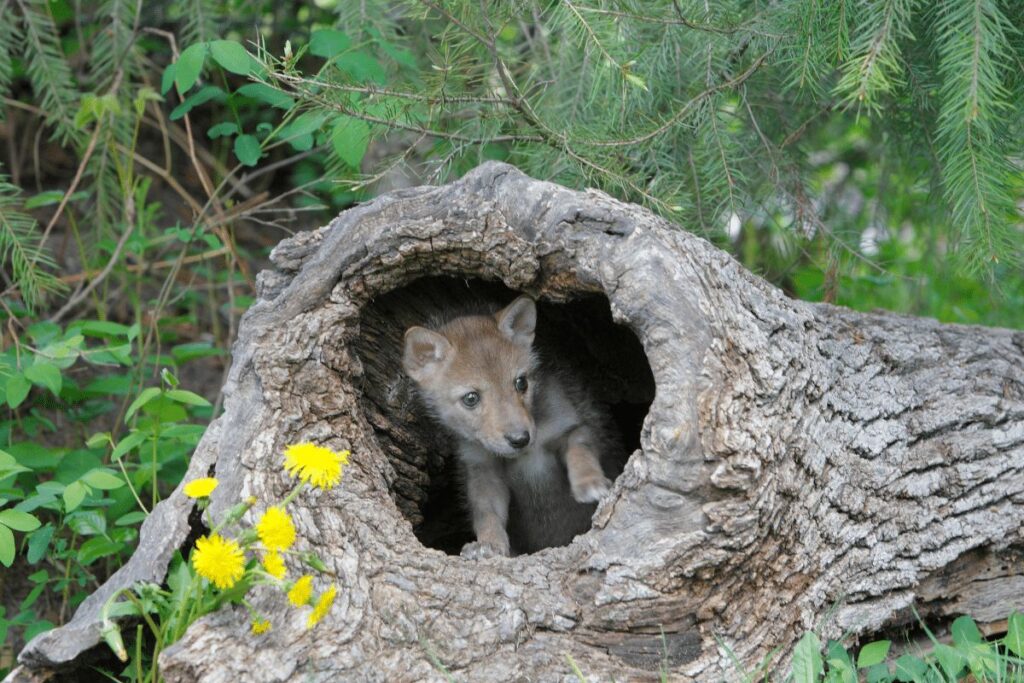
Regardless of size, all coyotes have long, slender legs; a narrow muzzle; and a bushy tail that they hold low to the ground when running. Their fur is typically a mix of gray, brown, and black, but can also be predominantly red or blond in color.
While hiking through Glacier National Park, we came across a field full of playful coyote cubs! It was such an amazing sight to see these little guys frolicking around and enjoying the summer sun.
The cubs were very curious about us and would approach us cautiously before darting away again to play with each other. We spent some time observing them before continuing on our hike and it was definitely one of the highlights of our trip.
In the wild, coyote cubs typically stay with their parents or family for about a year before dispersing to find their own territories. During this time, they learn valuable survival skills and an understanding of how to live in the wild. They also learn how to hunt and interact with other coyotes, which is why it was so fun to observe them playing together in the field.
Glimpsing Elk Eating Grasses
As we hiked along the trail in Glacier National Park, we were lucky enough to catch a glimpse of some elk eating grasses. It was a beautiful sight to see these majestic animals in their natural habitat.
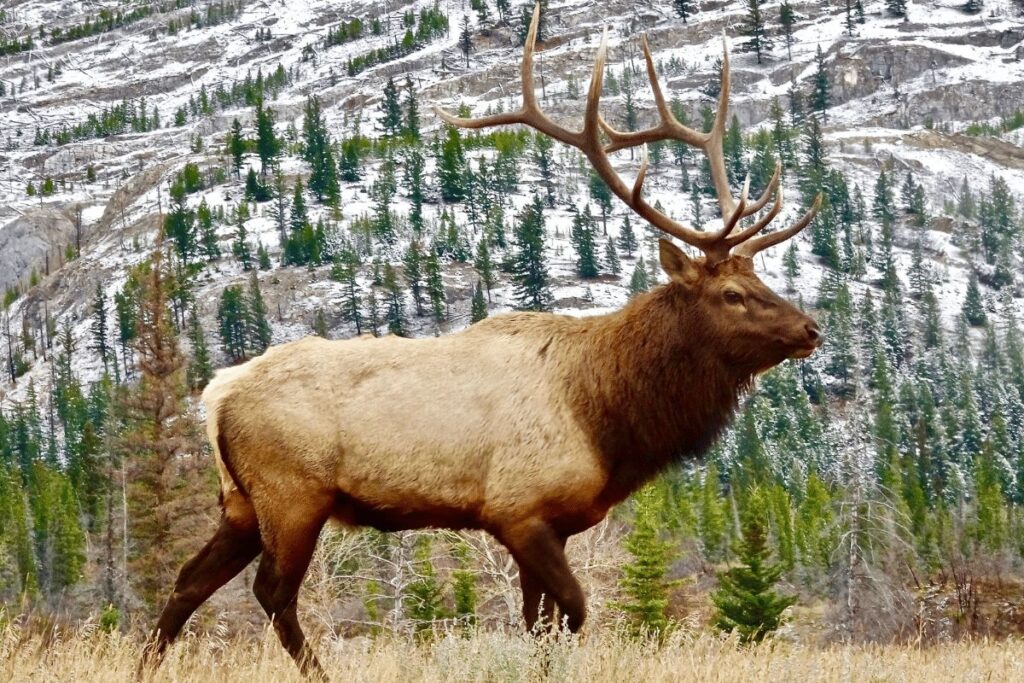
The elk were grazing on the lush green grasses, their powerful bodies swaying from side to side as they searched for the best blades. We could see their strong muscles rippling in the sunlight as they moved gracefully around us. Every now and then, one of them would raise its head to look at us with a curious eye before returning to its meal.
It was a peaceful and calming experience to watch them eat, and we felt privileged that we had been able to witness this moment in nature. We stood in awe of these incredible animals, admiring their beauty and strength. Eventually, after some time had passed, they moved on and we continued our hike into the park.
Where can I see elk in Glacier National Park?
Elk can be found in several areas of Glacier National Park, including the valleys and meadows of the park’s lower elevations. Some of the best places to see elk in Glacier National Park include:
Many Glacier Valley: This is one of the most popular areas of the park for elk sightings. The valley has plenty of grassy meadows, which are a favorite feeding spot for elk.
Two Medicine Valley: This is another great spot to see elk, especially during the early morning or late afternoon when they are most active.
St. Mary Valley: Elk can often be seen grazing in the meadows of St. Mary Valley, particularly during the fall rutting season.
North Fork Valley: This area of the park is less crowded than some of the other popular elk viewing spots, but it can be a good place to see elk in their natural habitat.
Apgar Village: Elk are known to wander into the Apgar Village area, which is located near the west entrance of the park.
Remember, when viewing elk in Glacier National Park or any other wildlife, it is important to keep a safe distance and never approach them.
Seeing an Osprey Hunting Fish from Above
As we hiked along the trails in Glacier National Park, we were constantly on the lookout for wildlife. One of the most amazing animals we saw was an osprey hunting fish from above. The osprey is a large bird of prey with a wingspan of up to six feet.
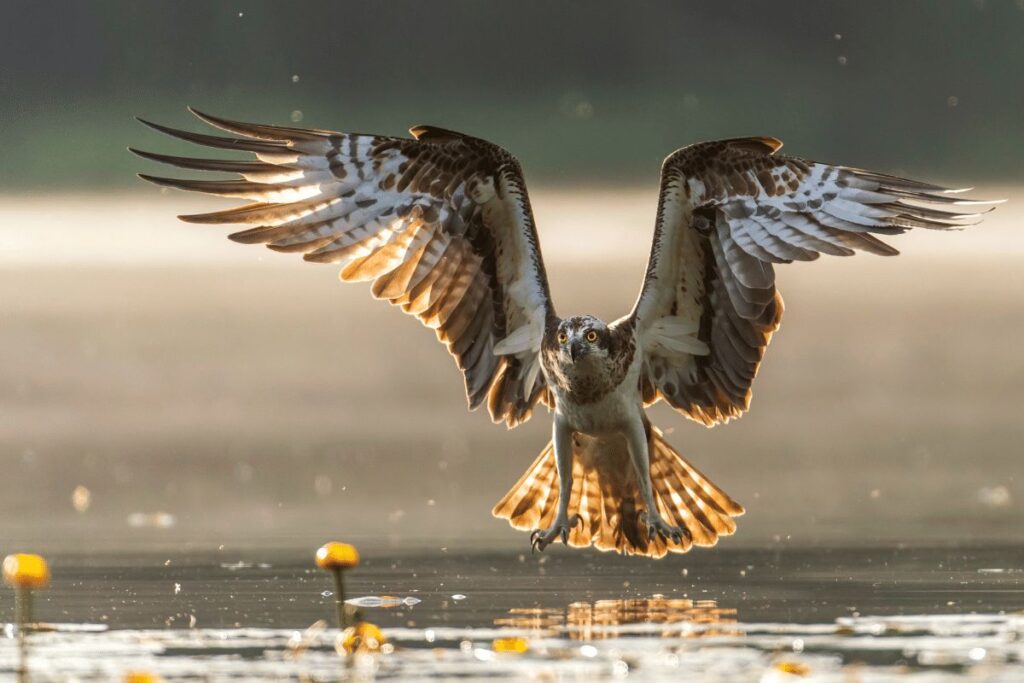
They are experts at hunting fish, and can often be seen hovering over bodies of water in search of their next meal.
We were lucky enough to see an osprey catching a fish right in front of us! The bird flew low over the water before suddenly diving down and scooping up a fish in its talons. It was an incredible sight to see, and definitely one of the highlights of our hike.
Pika
Pika are small, mouse-like mammals that live in talus fields on rocky mountain slopes. They are well-adapted to their cold, harsh environment and can be seen scampering about in the summer months.
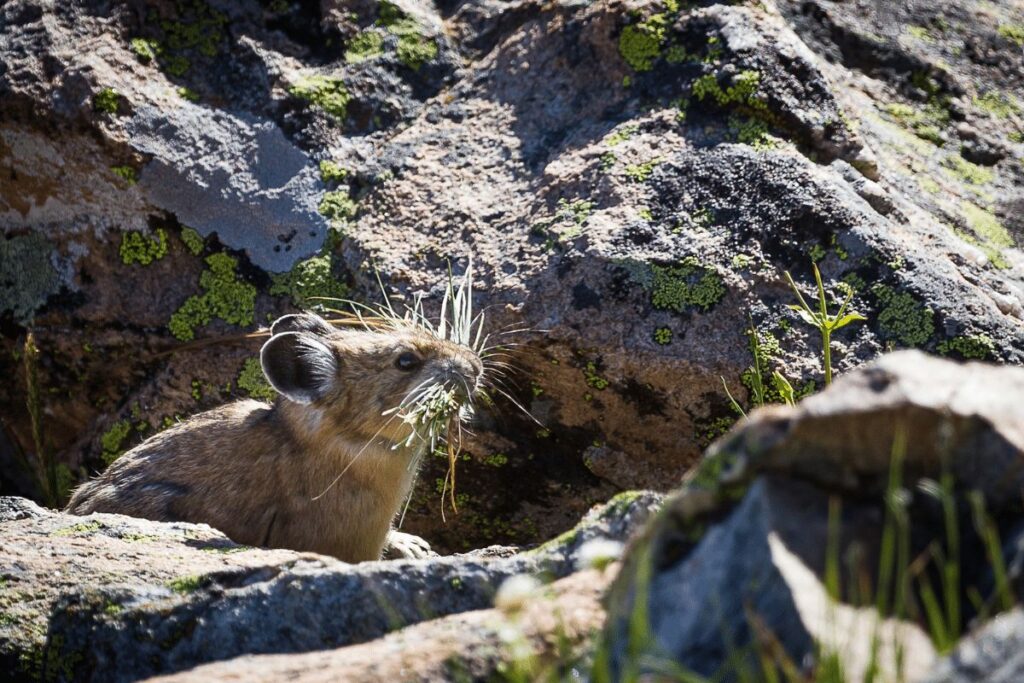
Pika are often mistaken for rodents, but they are actually members of the lagomorph family, which includes rabbits and hares. These creatures have round body shapes, short legs, and long ears. Their fur is thick and dense, providing insulation against the cold.
Pika are interesting creatures to watch. They are very active and have a variety of vocalizations that they use to communicate with each other. They are also very curious animals, and will often approach hikers in order to investigate them further.
Where can I see pika glacier?
Pikas are small, cute mammals that inhabit high-elevation talus slopes in Glacier National Park. They are active during the summer months when the snow has melted and can be found in areas of the park with rocky terrain and abundant vegetation.
One of the best places to see pikas in Glacier National Park is along the Highline Trail, which runs from Logan Pass to The Loop. This trail crosses over several talus slopes where pikas are known to live. You may also have luck spotting pikas along the trails in the Many Glacier and Two Medicine areas of the park.
To increase your chances of seeing pikas, it is best to visit the park during the summer months when they are most active. Early morning and late afternoon are the best times to see pikas, as they are most active during these cooler parts of the day. Keep in mind that pikas are small and quick, so you’ll need to be patient and have a sharp eye to spot them.
Busy Beavers
We were lucky enough to encounter a few beavers while on our hike! They are such amazing animals. We watched them swim in the lake and build their dams. It was really incredible to see them in their natural habitat.
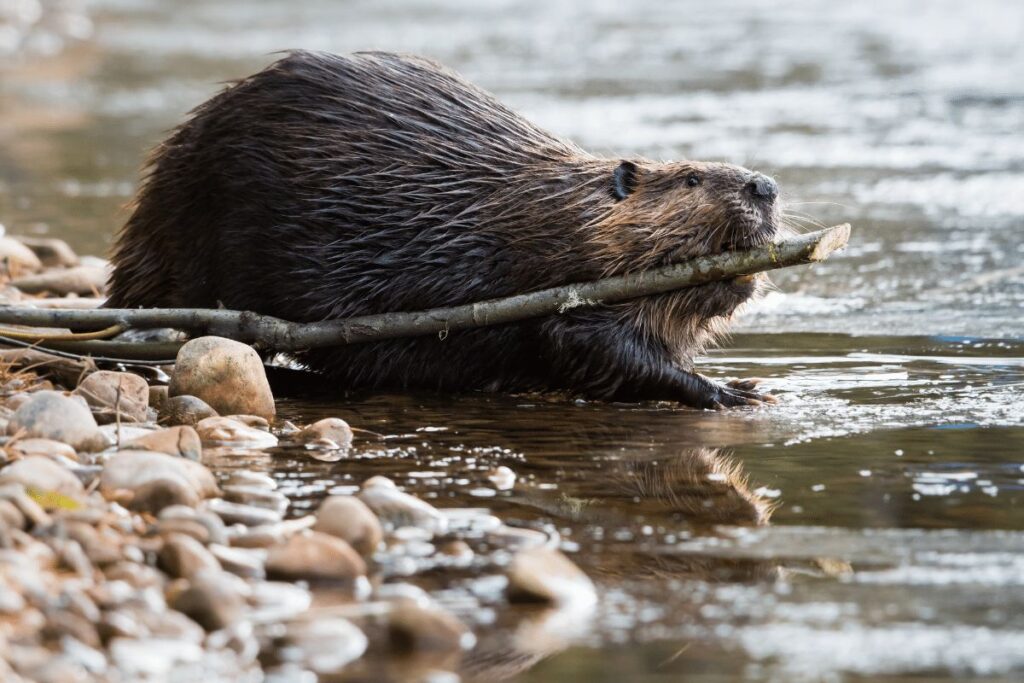
Busy beavers are incredibly hard-working animals. They spend most of their days building and maintaining their dams, gathering food, and caring for their young. A single beaver family can build an entire pond in only a few months!
Beavers are also quite social creatures. They live in colonies, with each family having its own den or lodge near the others. In these lodges, they care for and protect one another against predators.
Where to see beavers in glacier national park?
Beavers are primarily nocturnal animals, which can make them challenging to spot in Glacier National Park. However, there are a few areas of the park where beavers are known to be active and where you may have a chance to see them:
Lake McDonald: Beavers are known to be active around the edges of Lake McDonald, particularly in the early morning or late evening.
McDonald Creek: This is another area where beavers are often active. Look for beaver dams and lodges along the creek.
Logging Lake: This secluded lake is a great place to spot beavers, especially early in the morning or at dusk.
Many Glacier: Beavers can sometimes be spotted along the shores of Swiftcurrent Lake and Fishercap Lake in the Many Glacier area.
Remember, beavers are sensitive to human disturbance, so it is important to watch them from a safe distance and avoid making loud noises or sudden movements. Be sure to bring binoculars or a camera with a telephoto lens to get a closer look.
What do beavers eat in Glacier National Park?
Beavers in Glacier National Park primarily feed on a diet of tree bark and cambium. They are particularly fond of the soft inner bark of aspen, cottonwood, and willow trees. Beavers also eat leaves, twigs, and aquatic plants such as water lilies, cattails, and sedges.
In the winter, when food is scarce, beavers may rely on their stored food caches and eat the bark from branches they have stored in their lodges.
Beavers are herbivores and are well adapted to their environment with large incisors that are perfect for gnawing through tough bark and wood. They are important ecosystem engineers, as they create wetland habitats that support a variety of plant and animal species.
Wolverines
These fierce predators are known for their strength and cunning, and they are a sight to behold. We were lucky enough to see a wolverine on our hike, and it was an unforgettable experience.
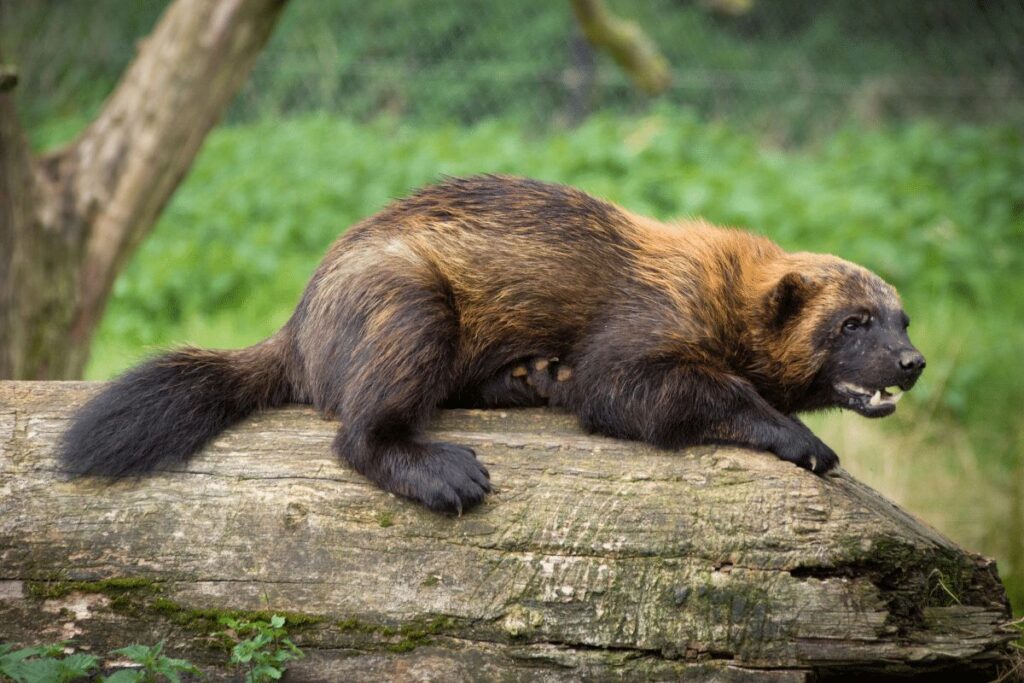
Where to see Wolverines in glacier national park?
Wolverines are rare and elusive animals that are difficult to spot in Glacier National Park. They are typically found in high-elevation areas with deep snowpacks, where they hunt for food and build dens. Here are a few tips on where to look for wolverines in Glacier National Park:
Logan Pass: Wolverines have been spotted in the high-elevation areas around Logan Pass, particularly in the winter when there is deep snowpack. Keep an eye out for tracks in the snow and listen for their distinctive growls and grunts.
Belly River Valley: This remote area of the park is known to be a wolverine habitat, with several sightings reported in recent years. The best way to access the Belly River Valley is by hiking the Chief Mountain Trail or the Belly River Trail.
Nyack Creek: This rugged wilderness area is home to a small population of wolverines. You can access Nyack Creek via the Nyack/Coal Creek Trail, which is a challenging but rewarding hike.
Remember, wolverines are rare and endangered animals, so it is important to view them from a safe distance and avoid disturbing their natural behavior. If you do spot a wolverine in Glacier National Park, consider reporting the sighting to park officials to help with conservation efforts.
Mountain Lions
While hiking in Glacier National Park, we were lucky enough to see a few mountain lions! These large cats are native to the park and are an impressive sight to see.
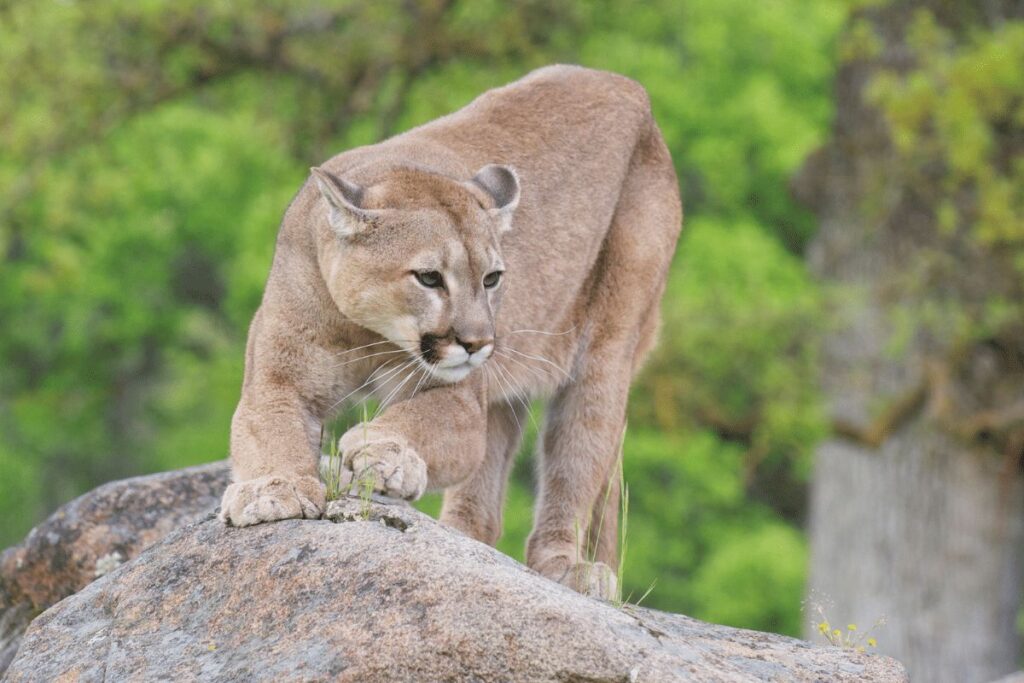
Mountain lions are solitary animals and typically only come together to mate. They are very stealthy hunters and can take down prey much larger than themselves. In Glacier National Park, they primarily hunt elk and deer.
If you’re lucky enough to see a mountain lion while hiking, be sure to give them plenty of space and do not approach them. These animals are wild and dangerous and should be respected as such.
Where to see Mountain Lions in Glacier National Park?
While sightings are rare, they do occur from time to time. Here are a few tips on where to look for mountain lions in Glacier National Park:
High-Elevation Areas: Mountain lions prefer to live in high-elevation areas with rugged terrain and abundant prey. Look for signs of mountain lion activity, such as tracks or scat, along high-elevation trails such as the Highline Trail or the Swiftcurrent Pass Trail.
Remote Areas: Mountain lions are shy and tend to avoid areas with a lot of human activity. Consider hiking or backpacking in remote areas of the park, such as the North Fork or the Belly River Valley, to increase your chances of seeing one.
Dawn and Dusk: Mountain lions are most active during the early morning and late evening hours. Consider hiking or camping during these times of day, and keep a sharp eye out for movement or signs of activity.
Remember, mountain lions are powerful predators and should be treated with caution and respect. If you do encounter a mountain lion in Glacier National Park, stay calm, make yourself look larger, and slowly back away while maintaining eye contact. Never approach or run from a mountain lion, as this can trigger an attack.
Canada Lynx
The Canada Lynx is a North American species of wild cat that ranges across the continent, from northern Alaska all the way down to New Mexico. We were lucky enough to encounter one of these beautiful animals during our hike through Glacier National Park!
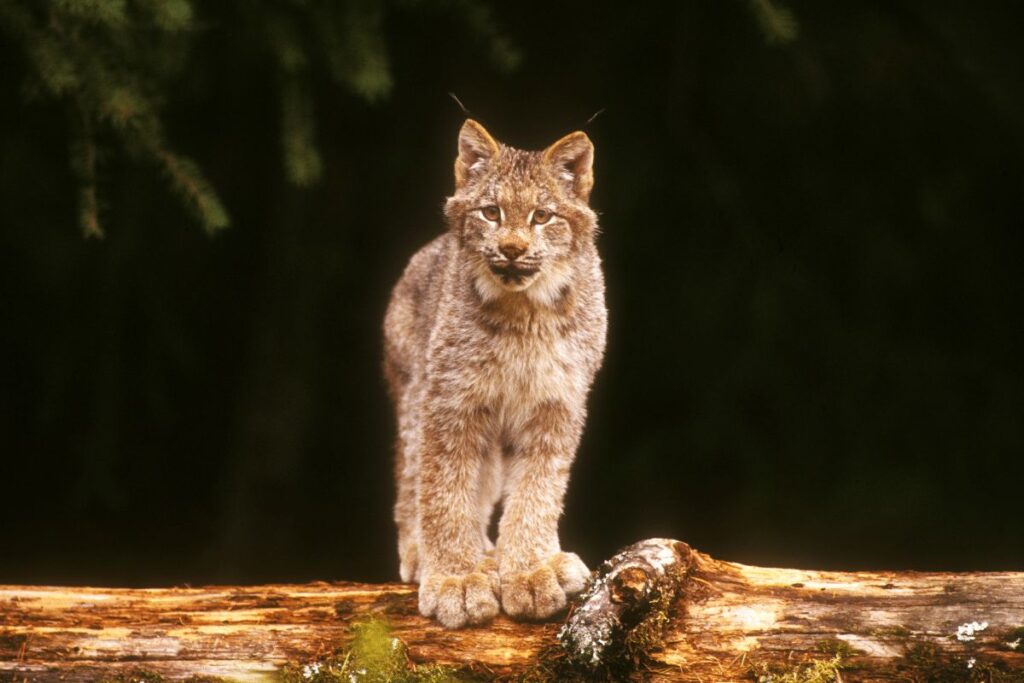
The Canada Lynx is a shy and elusive creature, so we were thrilled to get a glimpse of one on our hike. These cats are typically nocturnal, so we must have seen it during its morning hunt. The lynx was stalking something in the bushes, and we watched silently for a few minutes before it finally pounced on its prey.
It was an amazing experience to see such a rare and majestic animal in the wild, and we feel very lucky to have had the opportunity.
Glacier National Park and Our Hiking Adventure
Glacier National Park is one of the most popular national parks in the United States. Located in Montana, Glacier National Park is known for its stunning scenery and amazing wildlife.
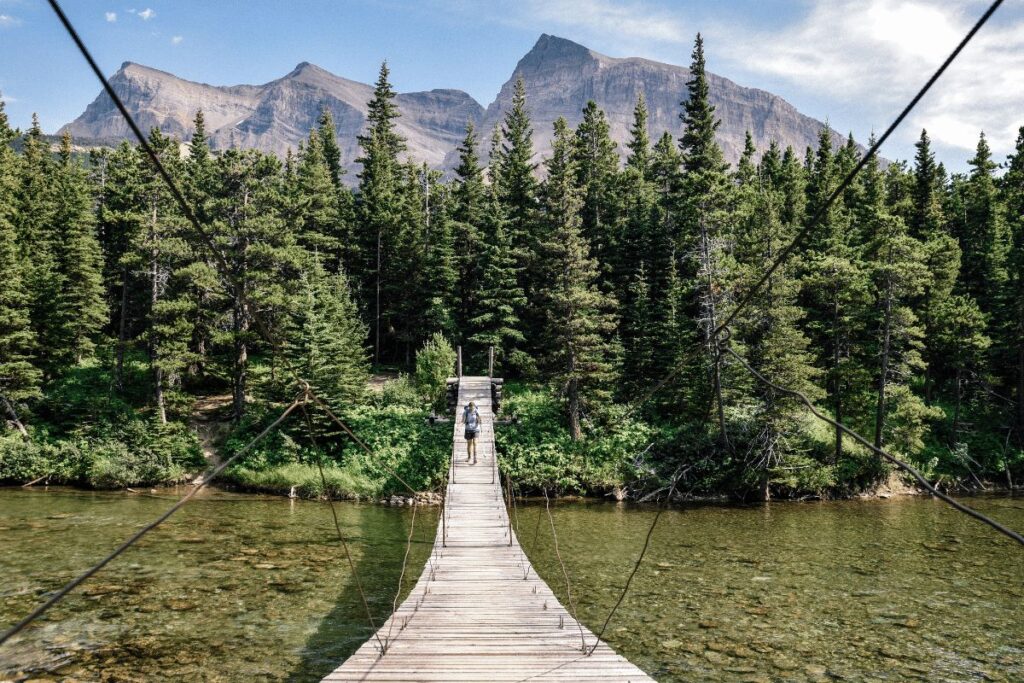
Our hiking adventure began early in the morning. We started at the trailhead and immediately began to see some of the park’s amazing wildlife. We saw bighorn sheep, mountain goats, and even a grizzly bear!
The views from the trail were incredible. We could see glaciers, waterfalls, and mountains as far as the eye could see. We even got to cross a river on a suspension bridge!
We stopped for lunch at a beautiful spot overlooking a valley. After lunch, we continued our hike and eventually made it to our campsite for the night.
We had an amazing time hiking in Glacier National Park and seeing all of its incredible wildlife and scenery.
Main hiking trails in Glacier National Park include:
• Highline Trail: This is the most popular trail in Glacier National Park and provides stunning views of the park.
• Iceberg Lake Trail: This trail offers a more strenuous hike with beautiful views of glaciers and lakes.
• Grinnell Glacier Trail: This trail is quite strenuous, but offers great views of glaciers and wildlife.
• Ptarmigan Tunnel Trail: This trail is a shorter, yet still challenging hike with incredible views of the park.
Conclusion
Our hiking adventure in Glacier National Park was an unforgettable experience. From the majestic mountains to the incredible wildlife, we could not have asked for a better journey. We saw some of nature’s most impressive creatures and were reminded once again how important it is to protect them from harm.
The animals that inhabit this beautiful park need our help, so let us all do our part by conserving their habitats and advocating for their protection.

